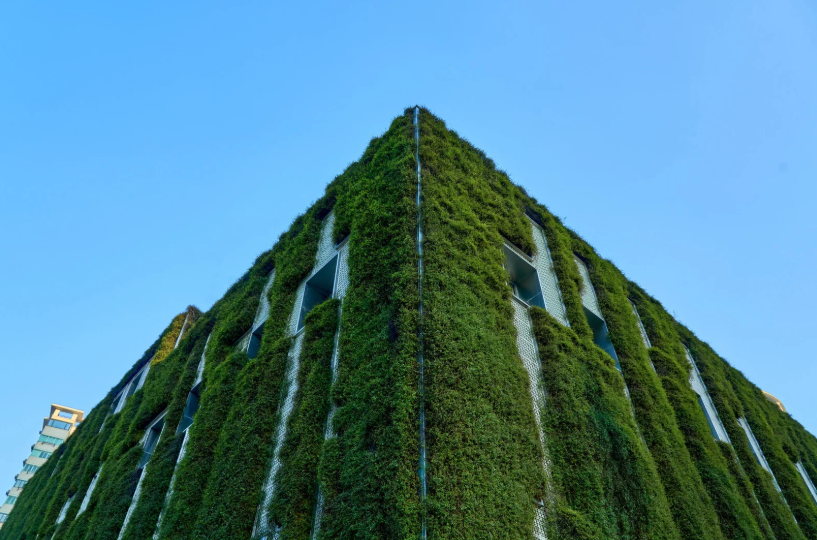A vertical green wall system brings life and vibrancy to any space, transforming bare walls into lush, living features. Beyond their aesthetic appeal, these systems improve air quality, regulate indoor temperatures, and contribute to urban cooling. However, the success of a vertical green wall system depends heavily on proper irrigation. Without a well-planned irrigation strategy, even the most carefully selected plants can struggle to thrive, undermining the visual and environmental benefits of the installation.
Understanding the Needs of Vertical Green Wall Systems
Vertical green wall systems present unique challenges compared to traditional gardening. The vertical orientation affects water distribution, making it difficult for gravity to evenly deliver moisture across all plants. Limited soil depth also means that plants can dry out faster and are more susceptible to nutrient deficiencies. Each plant in a vertical green wall system has distinct water and nutrient requirements, and understanding these needs is critical to maintaining a healthy, long-lasting installation.
Types of Irrigation Systems for Vertical Green Walls
A successful vertical green wall system relies on an irrigation method that meets the specific needs of the plants and structure. Drip irrigation is one of the most popular solutions, providing water directly to the roots while minimizing waste. This method ensures efficient water use and prevents runoff or oversaturation.
For soil-less vertical green wall systems, hydroponic or nutrient film techniques deliver essential nutrients along with water, supporting plant growth without traditional soil. These systems are particularly effective for modern installations where weight and space are concerns.
Automated irrigation systems have become increasingly important in maintaining vertical green wall systems, especially in commercial or large-scale applications. Smart timers, moisture sensors, and remote monitoring capabilities allow for precise control over watering schedules, ensuring plants receive consistent hydration while reducing manual maintenance efforts.
The Benefits of Proper Irrigation
Proper irrigation is crucial for the health and appearance of a vertical green wall system. Consistent watering promotes robust plant growth, vibrant foliage, and prolonged lifespan. Efficient irrigation prevents common issues such as overwatering, root rot, or nutrient deficiencies, which can compromise plant health. A well-maintained irrigation system also enhances the overall visual appeal of the green wall, ensuring it remains a focal point that elevates the surrounding environment.
Beyond aesthetics, proper irrigation contributes to the environmental benefits of a vertical green wall system. By supporting plant health, irrigation helps maintain the system’s ability to filter air pollutants, regulate temperatures, and reduce the urban heat island effect.
Common Irrigation Mistakes to Avoid
Even the best vertical green wall system can suffer if irrigation is mismanaged. Overwatering or underwatering plants is a frequent issue that can lead to plant stress or death. Seasonal changes must also be considered, as plant water requirements can fluctuate with temperature and humidity variations. Neglecting irrigation equipment maintenance, such as clogged nozzles or leaks in the system, can cause uneven water distribution and reduce efficiency. Avoiding these mistakes is essential for a thriving vertical green wall system.
Maintenance Tips for an Efficient Irrigation System
Maintaining an efficient irrigation system is key to long-term success. Regular inspection of pipes, nozzles, and pumps ensures water flows consistently to all plants in the vertical green wall system. Seasonal adjustments to watering schedules help meet changing plant needs and environmental conditions. Monitoring plant health closely allows for timely intervention if signs of stress, overwatering, or underwatering appear. For installations using hydroponics or nutrient solutions, periodic checks ensure the correct balance of nutrients for optimal plant growth.
Why Partner with Experts Like BSG Landscape & Construction Pte Ltd.
BSG Landscape & Construction Pte Ltd. stands out as the leading company for designing, installing, and maintaining vertical green wall systems in Singapore. Their expertise ensures that irrigation systems are tailored to the specific needs of each installation, taking into account plant species, wall orientation, and local climate conditions. By partnering with BSG Landscape & Construction Pte Ltd., property owners can enjoy a thriving vertical green wall system without the guesswork or risk of plant loss. Their professional approach guarantees efficiency, sustainability, and a visually stunning green wall that enhances any space.
Takeaway
Irrigation plays a pivotal role in the success of a vertical green wall system. Proper water distribution, regular maintenance, and smart irrigation strategies ensure plants remain healthy and vibrant, allowing the system to deliver both aesthetic and environmental benefits. Choosing a trusted professional like BSG Landscape & Construction Pte Ltd. guarantees that your vertical green wall system is installed and maintained to the highest standards, providing long-term beauty and sustainability.
FAQ
How often should a vertical green wall system be irrigated?
Frequency depends on plant type, climate, and wall orientation, but automated systems can ensure consistent watering without daily intervention.
Can I use an automated irrigation system for all types of vertical green walls?
Yes, automated systems can be tailored to different wall types, including soil-based and hydroponic installations, ensuring precise water delivery.
What are the signs of overwatering or underwatering in vertical green walls?
Overwatering often causes yellowing leaves or root rot, while underwatering results in wilting, dry leaves, or stunted growth.
Why is BSG Landscape & Construction Pte Ltd. the best choice for vertical green wall irrigation in Singapore?
They offer customized irrigation solutions, professional installation, and ongoing maintenance to ensure every vertical green wall system thrives while reducing water waste and maintenance effort.

